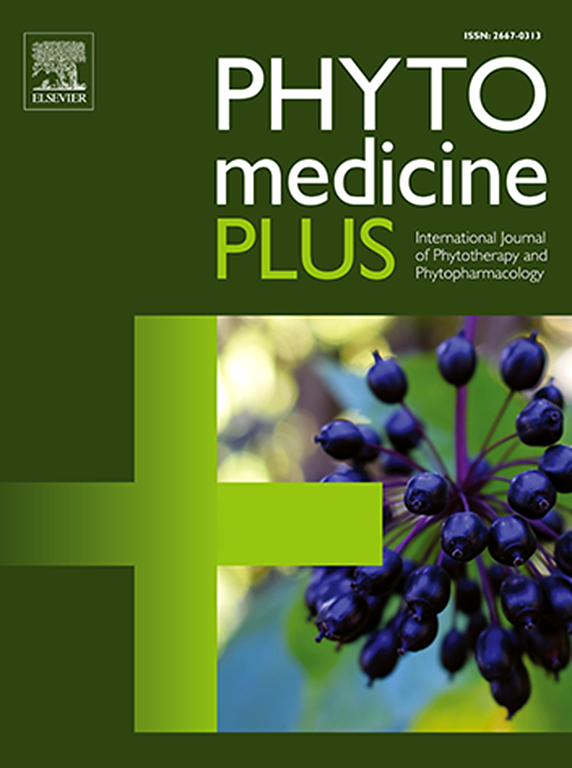Documentation of folk-medicinal uses of fruit tree species by the indigenous communities of Sikkim Himalayas
Q3 Pharmacology, Toxicology and Pharmaceutics
引用次数: 0
Abstract
Background
Sikkim is one of the Himalayan states in India and the only fully organic state in the country. Despite being a hotspot for biodiversity worldwide, it has received comparatively limited research. Indigenous people of the state place a great value on the edible wild fruit plants, which are also a significant source of ethnomedicine.
Aim
The aim of the current study, conducted from 2021 to 2024, was to document the wild edible fruits of the Indian state of Sikkim and their socioeconomic significance among rural communities, as well as their ethnomedical uses.
Methods
A total of 76 people from 23 villages, spanning a range of age groups (45–75 years), with both male and female respondents, were interviewed.
Results
There were a total of 59 fruit species found, representing 48 genera and 32 families. Numerous illnesses, including stomach issues (dysentery, diarrhea, ulcers, vomiting, and constipation), fever, bronchitis, diabetes, jaundice, toothaches, anemia, swellings, skin conditions, bone fractures, itching, conjunctivitis, viral diseases, urinary diseases, tuberculosis, heart conditions, and many more, can be cured by these wild edible fruits that grow locally. Numerous other researchers worldwide, and in the northeastern Himalayan region specifically, have reported similar findings. Among all the families, Rosaceae accounted for the maximum with a total of 14 % of total of genera, followed by Moraceae (12 %), Rutaceae (8 %), Anacardiaceae (7 %), Combretaceae (5 %) and Elaeagenaceae, Fabaceae, Lauraceae, Myrtaceae, Rubiaceae (3 % each). In terms of the fruits' socioeconomic value, the majority of wild fruits are used in rural areas for traditional medicine, firewood, house construction, animal feed, and charcoal. The majority of these fruits can be purchased in the neighborhood market for between Rs. 60 and Rs. 300 per kilogram.
Conclusions
It is recommended that the great variety of edible wild fruit plants be preserved for use in the future. Certain species can be cultivated on marginal soils with little agricultural value and in conventional agroforestry systems. Despite their many applications, these fruits have not yet received adequate documentation. Therefore, it is crucial to record these priceless species before they go extinct.
锡金喜马拉雅地区土著社区对果树的民间药用记录
锡金是印度喜马拉雅地区的一个邦,也是该国唯一一个完全有机的邦。尽管它是生物多样性研究的热点,但目前的研究相对有限。该州的土著居民非常重视可食用的野生水果植物,这也是民族医学的重要来源。目前的研究于2021年至2024年进行,目的是记录印度锡金邦的野生可食用水果及其在农村社区中的社会经济意义,以及它们的民族医学用途。方法对来自23个村庄的76人进行访谈,涉及45-75岁年龄组,男女均有。结果共发现果种59种,隶属32科48属。许多疾病,包括胃病(痢疾、腹泻、溃疡、呕吐和便秘)、发烧、支气管炎、糖尿病、黄疸、牙痛、贫血、肿胀、皮肤病、骨折、瘙痒、结膜炎、病毒性疾病、泌尿系统疾病、肺结核、心脏病等等,都可以通过这些生长在当地的野生可食用水果来治愈。世界各地的许多其他研究人员,特别是喜马拉雅东北部地区的研究人员,也报告了类似的发现。在所有科中,蔷薇科最多,占总属数的14%,其次是桑科(12%)、芸香科(8%)、桃心科(7%)、combretacae科(5%)和Elaeagenaceae、Fabaceae、Lauraceae、myrtacae、Rubiaceae(各占3%)。就水果的社会经济价值而言,大多数野生水果在农村地区被用作传统药物、柴火、房屋建筑、动物饲料和木炭。这些水果大部分可以在附近的市场上以每公斤60卢比到300卢比的价格买到。结论建议对品种丰富的可食用野果植物进行保存,以备今后使用。某些物种可以在农业价值不大的边缘土壤和传统农林系统中种植。尽管这些果实有许多用途,但尚未收到充分的文件。因此,在这些珍贵的物种灭绝之前记录下来是至关重要的。
本文章由计算机程序翻译,如有差异,请以英文原文为准。
求助全文
约1分钟内获得全文
求助全文
来源期刊

Phytomedicine Plus
Medicine-Complementary and Alternative Medicine
CiteScore
3.70
自引率
0.00%
发文量
178
审稿时长
81 days
期刊介绍:
 求助内容:
求助内容: 应助结果提醒方式:
应助结果提醒方式:


